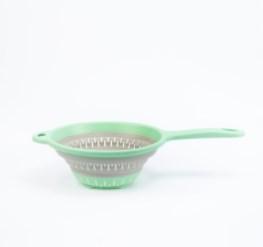In the field of plastic injection molding, improving the efficiency of Round Drain Baskets Moulds is crucial to achieving consistent product quality and reducing manufacturing costs. Among the many factors that influence productivity, cooling efficiency plays a dominant role, particularly because it often constitutes more than half of the entire molding cycle time. For which usually feature complex mesh geometries and thin walls, optimizing the cooling process is both technically challenging and strategically important.
One of the core challenges in cooling Round Drain Baskets Moulds lies in the geometry itself. The round and often perforated design of the drain baskets makes uniform heat dissipation more difficult, especially in areas with intricate mesh patterns or thicker junctions. Uneven cooling in these areas can lead to warping, internal stresses, and inconsistent shrinkage, which negatively affect both functionality and appearance. To counter this, designers must focus on achieving uniform and accelerated heat removal throughout the entire mold surface.
A highly effective approach involves the integration of conformal cooling channels within the mold. Unlike traditional straight-line channels, conformal cooling channels are designed to follow the exact shape and curvature of the mold cavity. In the context of Round Drain Baskets Moulds, this means that cooling lines can be placed closer to critical areas such as the inner basket mesh and base, ensuring more even temperature distribution. These channels are typically manufactured using advanced 3D metal printing technologies, allowing for highly customized and efficient cooling pathways that are impossible to achieve with conventional drilling.
Another major factor in enhancing the cooling efficiency of Round Drain Baskets Moulds is material selection. Mold inserts made from high thermal conductivity materials such as beryllium copper or certain aluminum alloys can significantly increase heat transfer rates. These materials are especially useful in the core regions of the mold, where heat buildup is most intense due to plastic accumulation. By strategically applying these materials only in heat-sensitive zones, manufacturers can balance cost and performance effectively.
Beyond design and materials, the characteristics of the cooling fluid and flow also matter greatly. Turbulent flow, which promotes better heat exchange compared to laminar flow, can be achieved by optimizing the internal geometry of the cooling channels and adjusting coolant flow rates. In many Round Drain Baskets Moulds, adding turbulence-enhancing inserts or using higher-pressure coolant systems helps to maintain optimal mold temperatures during high-speed production cycles.
Moreover, the use of advanced simulation software is a vital tool in the development phase of Round Drain Baskets Moulds. Mold flow and thermal analysis tools allow engineers to visualize heat distribution, identify hotspots, and test different cooling channel configurations virtually. These simulations can significantly reduce the need for physical prototyping and trial-and-error adjustments, leading to faster and more accurate mold development.
Once the mold is in operation, ongoing maintenance is crucial to preserve its cooling performance. Over time, scale and debris can accumulate in the cooling channels, reducing water flow and heat transfer capability. For Round Drain Baskets Moulds, which often operate continuously in high-volume production settings, regular cleaning and descaling routines are essential. Sensors and monitoring systems can be installed to detect blockages or flow inefficiencies in real time, allowing for proactive maintenance before cooling issues cause production defects.
In conclusion, improving the cooling efficiency involves a multi-faceted strategy that combines innovative mold design, advanced materials, fluid dynamics, and predictive engineering tools. As the demand for high-performance plastic drainage products continues to rise, manufacturers that invest in optimizing the thermal management of their Round Drain Baskets Moulds will enjoy reduced cycle times, higher part quality, and greater overall competitiveness. Through intelligent design and proactive process control, the cooling phase can be transformed from a bottleneck into a strategic advantage in mold manufacturing.
Name: Round Drain Baskets Moulds
Mould material: S136
Mould base: P20 steel
Cavity NO: 1+1
Product material: PP+TPR
Runner: Hot/cold
Mould life: 1 million~3 million shots
Delivery time: 35~50 days
